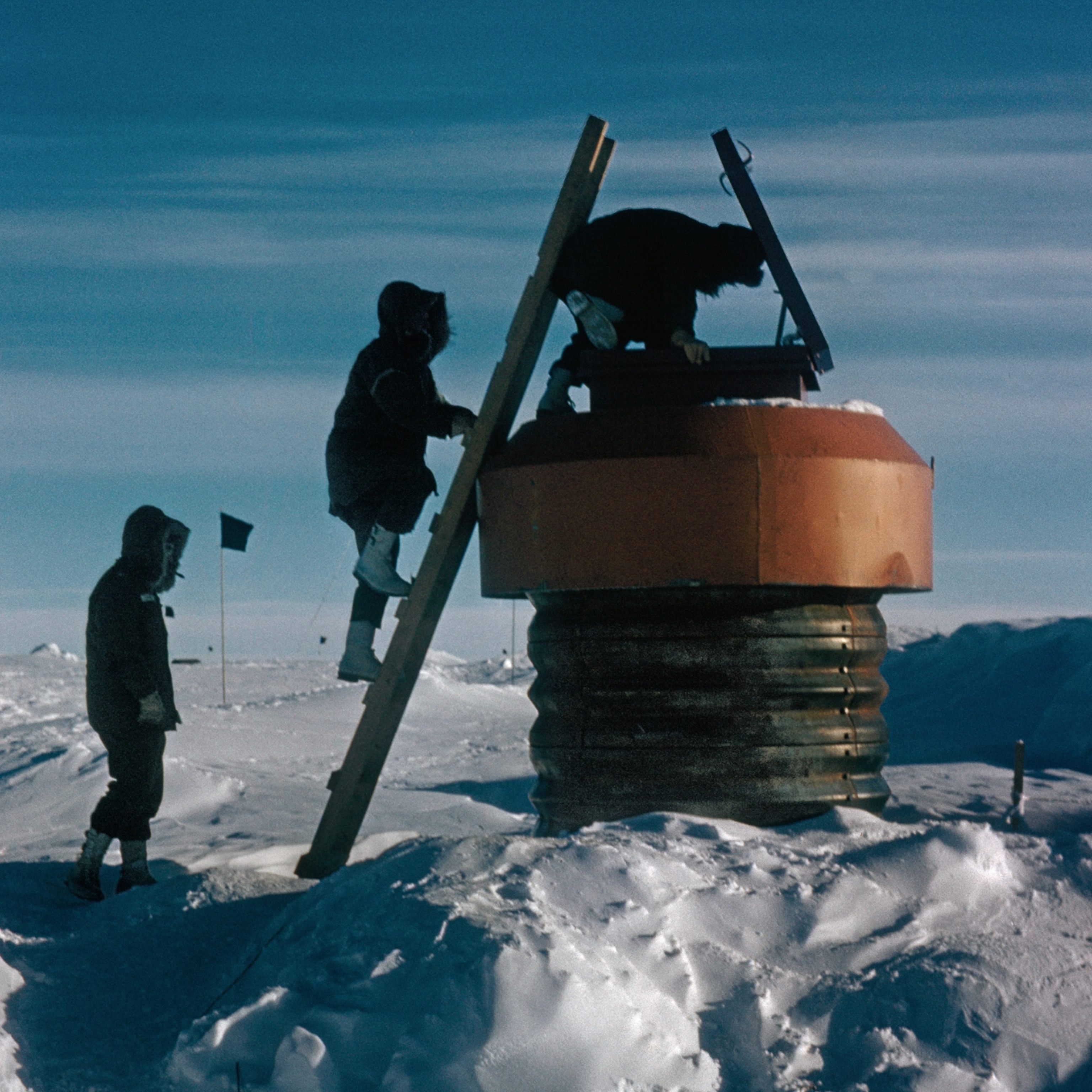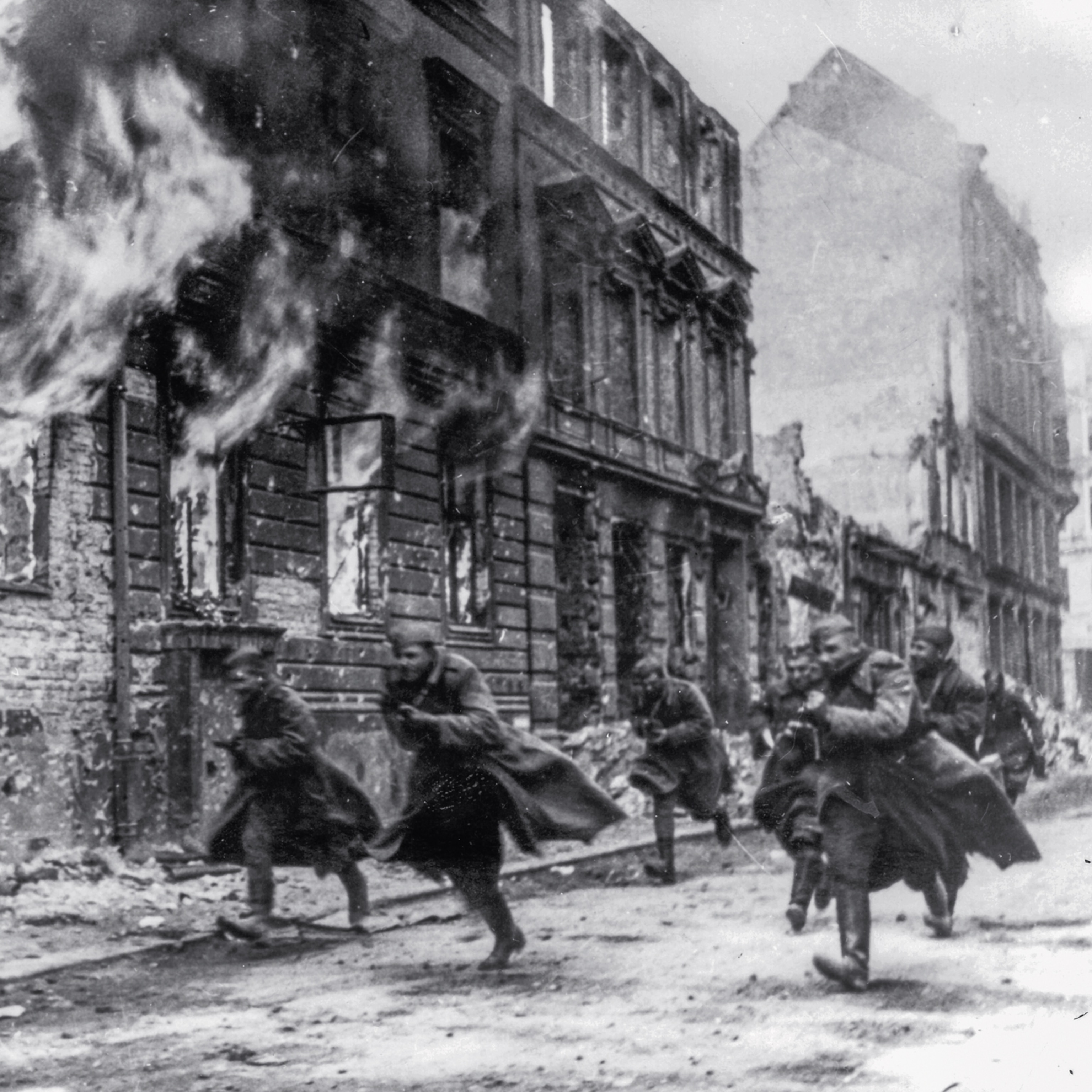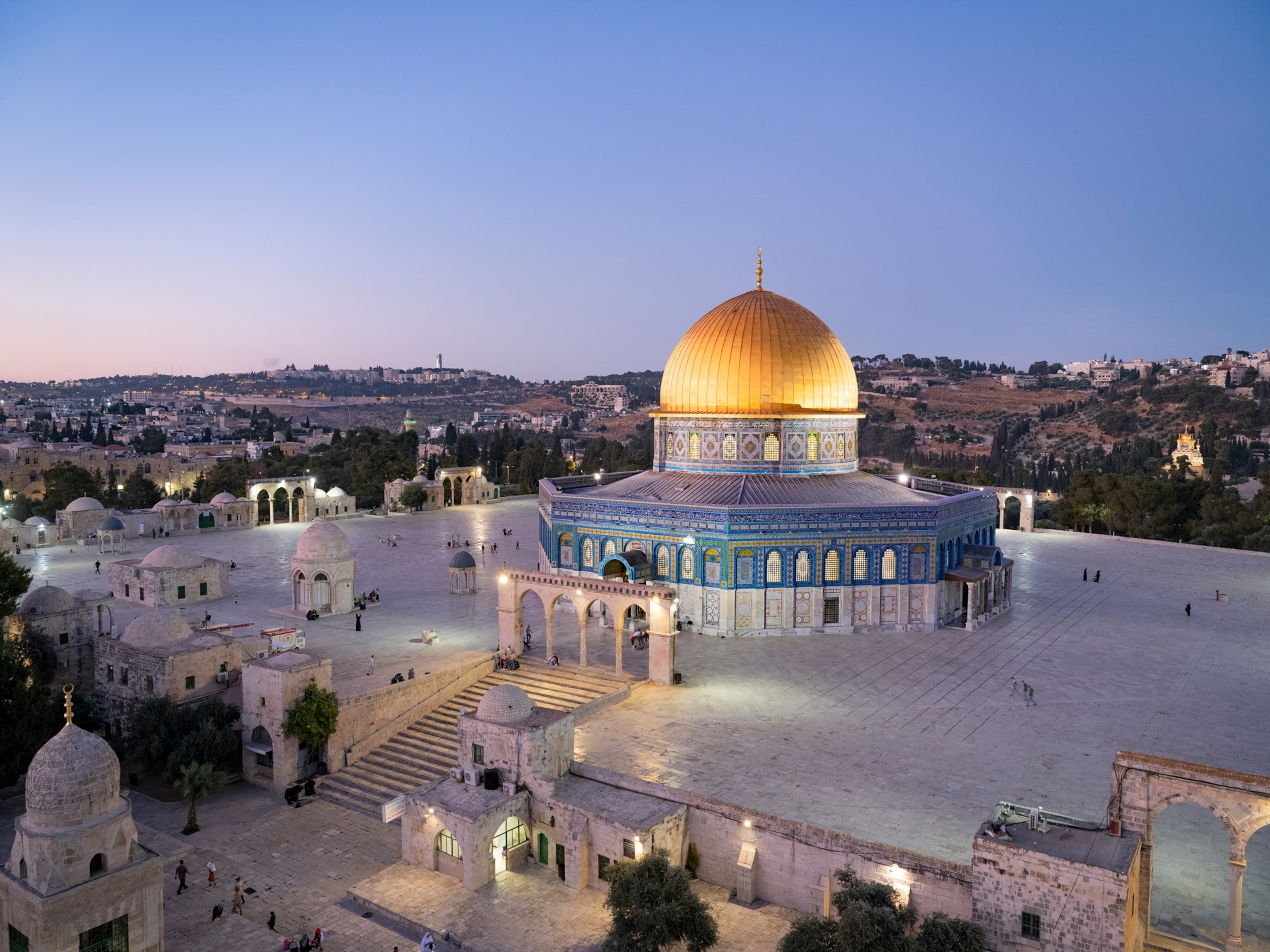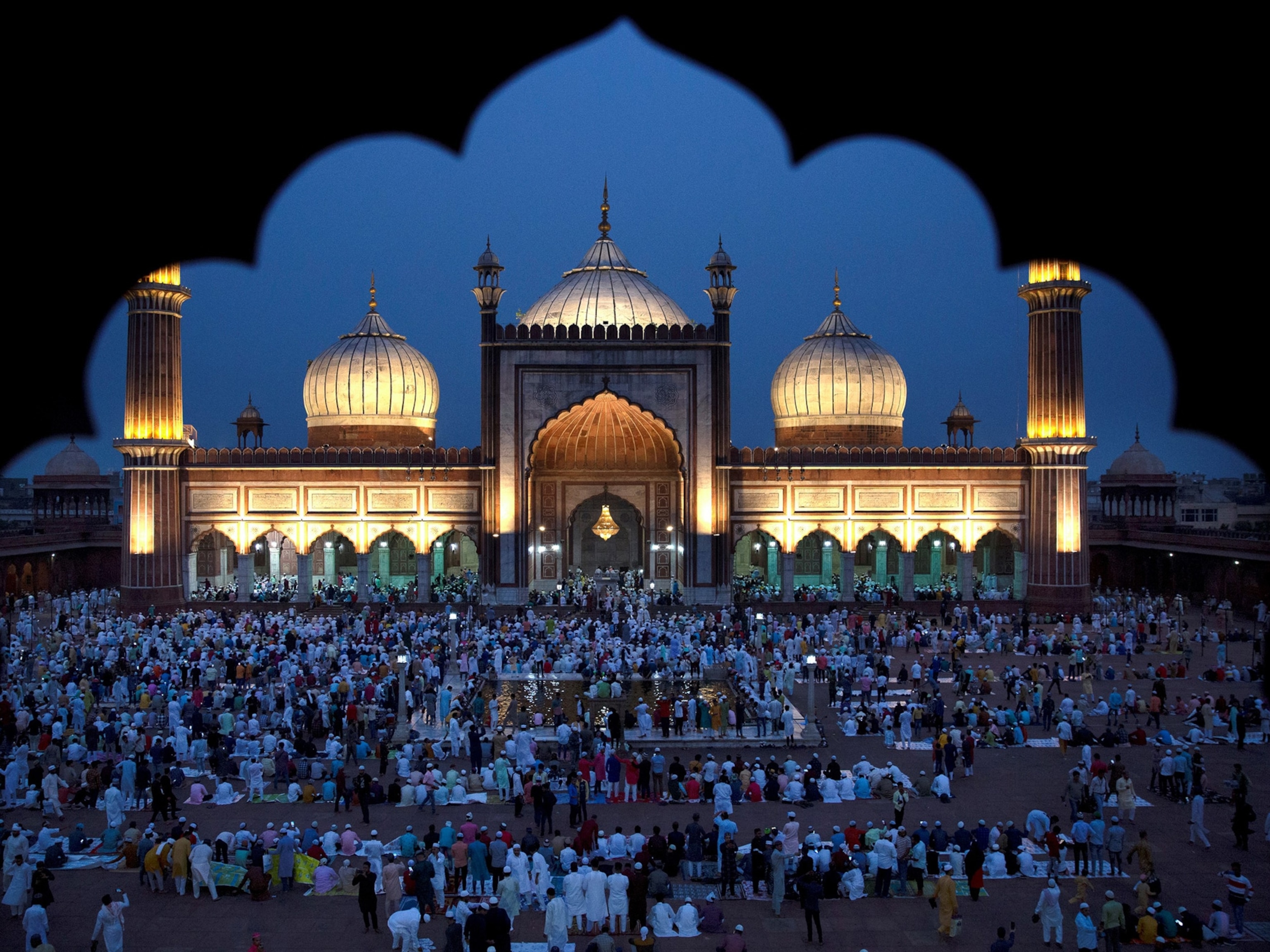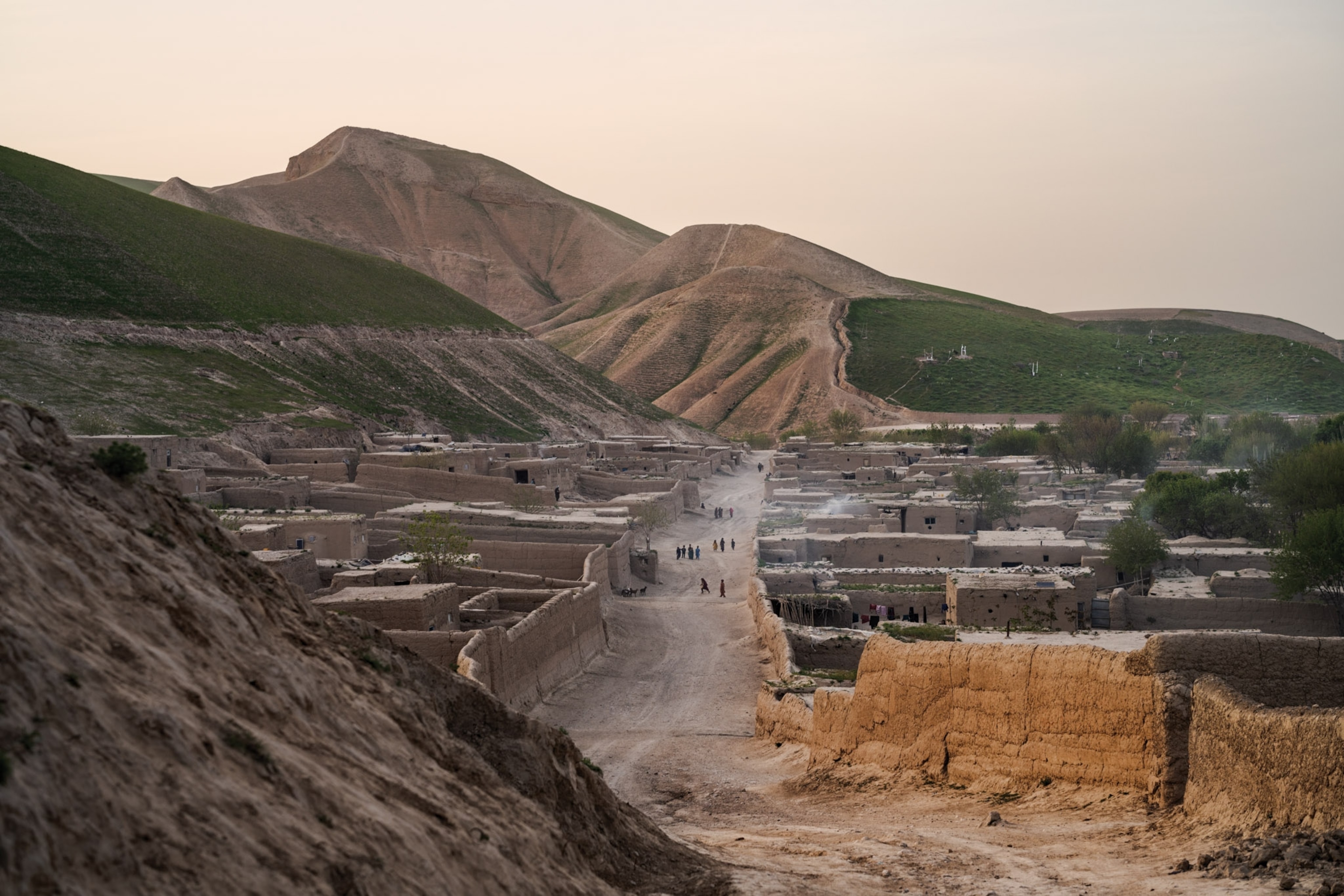
What a 2,000-mile journey around Afghanistan uncovers a year after the Taliban takeover
The war is over. The U.S. is gone. A bone-rattling drive along the Ring Road finds hardship and few traces of nation-building.
We’re free at last from the crush of Kabul morning traffic, and the map on my smartphone estimates it’ll take nine hours to drive 300 miles to Kandahar on National Highway 1, the most expensive and important road in Afghanistan.
The United States poured hundreds of millions of dollars into this stretch of asphalt—one leg of a 1,400-mile ring road that circles the country—to speed travel and boost commerce between the nation’s capital and its second largest city. But it would be foolish to make dinner plans in Kandahar.
The highway was first built in the 1950s and 60s by the Soviet Union and the United States, Cold War rivals jockeying for influence in Kabul. It was ruined by decades of war and neglect, and only about 30 miles of paved road remained in 2001. When the Kabul-to-Kandahar stretch was repaired and reopened in 2003, U.S. envoy Zalmay Khalilzad proclaimed, “We are standing—literally—on the road to Afghanistan’s future … It is a future of prosperity. It is a future of peace.” Nineteen years later, the battered roadway is a bone-rattling testament to the toll of rampant violence and graft that followed instead.

Less than an hour south of Kabul, in Wardak Province, the pavement starts to break apart, pockmarked by craters from Taliban explosives and weakened by ripples in cheap asphalt, forcing me to peel off the road or slam on the brakes repeatedly to avoid accidents. I seldom shift above third gear. Burka-clad widows begging for handouts and boys with shovels are cues to slow down for more bomb damage.
In the absence of repair crews, children such as Ehsanullah, 15, and his brother Rafiullah, 10, pack chasms with dirt from dawn until dark for tips of two dollars on a good day.
“Our father is sick, and my older brother is an addict,” Ehsanullah sighs. “What else can we do?”
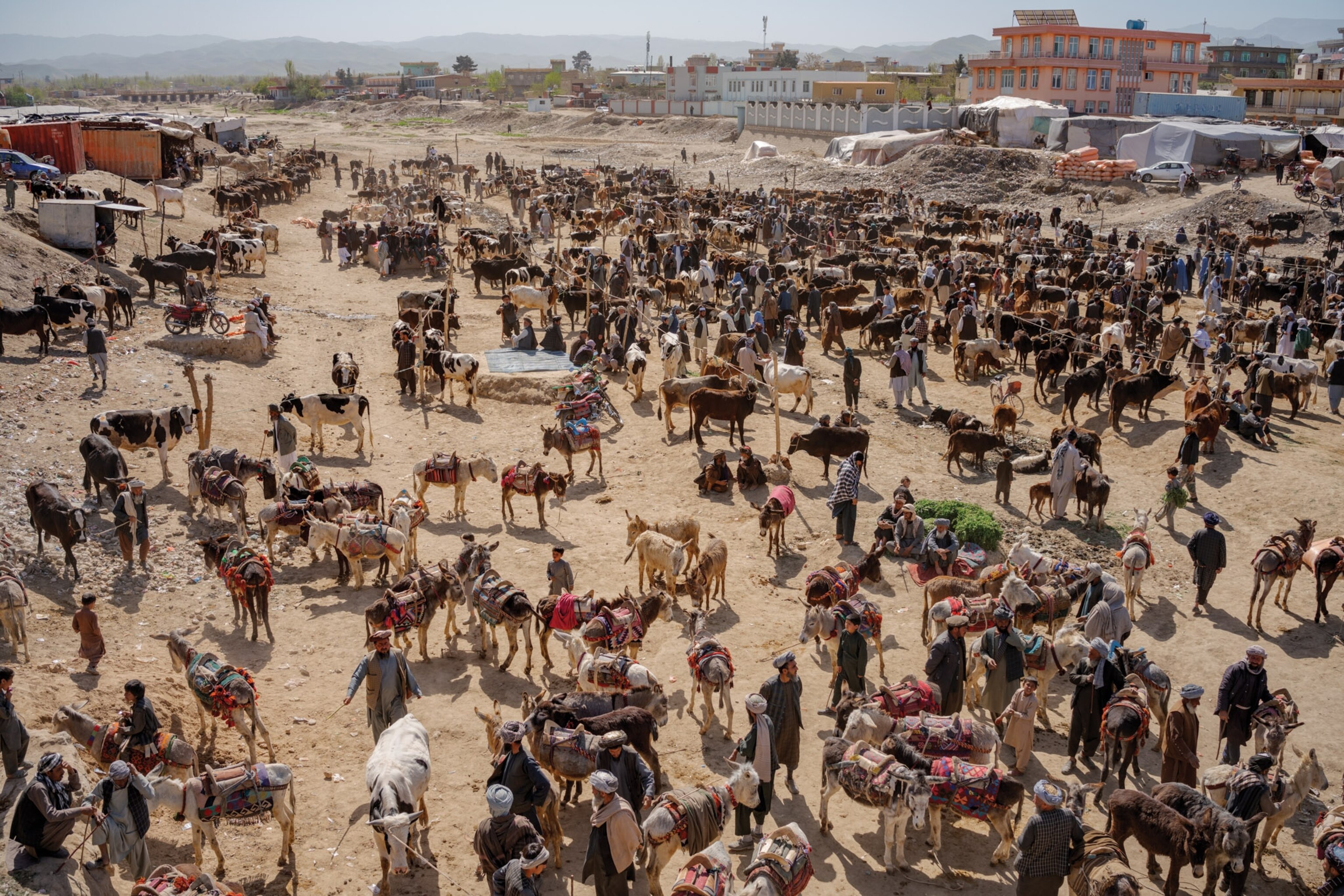
The drive is less stressful than my last trip through this stronghold of the Taliban, the hardline Sunni Muslim militia that first seized power in 1996 and was ousted by the U.S. in 2001 for sheltering al Qaeda chief Osama bin Laden after the 9/11 attacks. In August 2020 I was on this road as Taliban militants were hammering Afghan Army convoys. Firefights erupted out of nowhere, and a trickle of civilians traveled at their peril as outgunned government troops hunkered down in bullet-strafed outposts.
The police outpost where I’d spent the night is now a heap of rubble. Dozens more are abandoned, the steel-wire casings from dirt-filled defensive barriers scavenged for scrap. Columns of hard-packed earth are worn down by rains, dotting the hills like a constellation of ancient ruins. Hulks of tanks destroyed during the 1979-89 Soviet occupation sit within eyeshot of mangled American Humvees of more recent vintage, a jarring mash-up of nation-building ventures gone wrong.
It’s been a year since the Taliban seized power again as the U.S. withdrew its forces after 20 years. Photographer Balazs Gardi and I have rented a Toyota Land Cruiser to traverse National Highway 1, better known as the Ring Road, which connects four major cities in the east, south, west, and north. In our two decades of reporting in Afghanistan, it was too perilous before to make the full journey. But a lull in violence presents a rare opportunity to explore a country emerging from U.S. occupation.
Over two weeks, 18 provinces, and 2,084 miles, including off-road forays on rocky terrain that dented our truck, we meet hardened fighters, itinerant farmers, women enduring draconian restrictions not seen since 2001, and children forced to work to support their families. A unifying thread is relief that a long war that killed more than 150,000 Afghans is over, and a semblance of order restored. But there is also gathering despair that the new Taliban regime is no milder than its original incarnation.
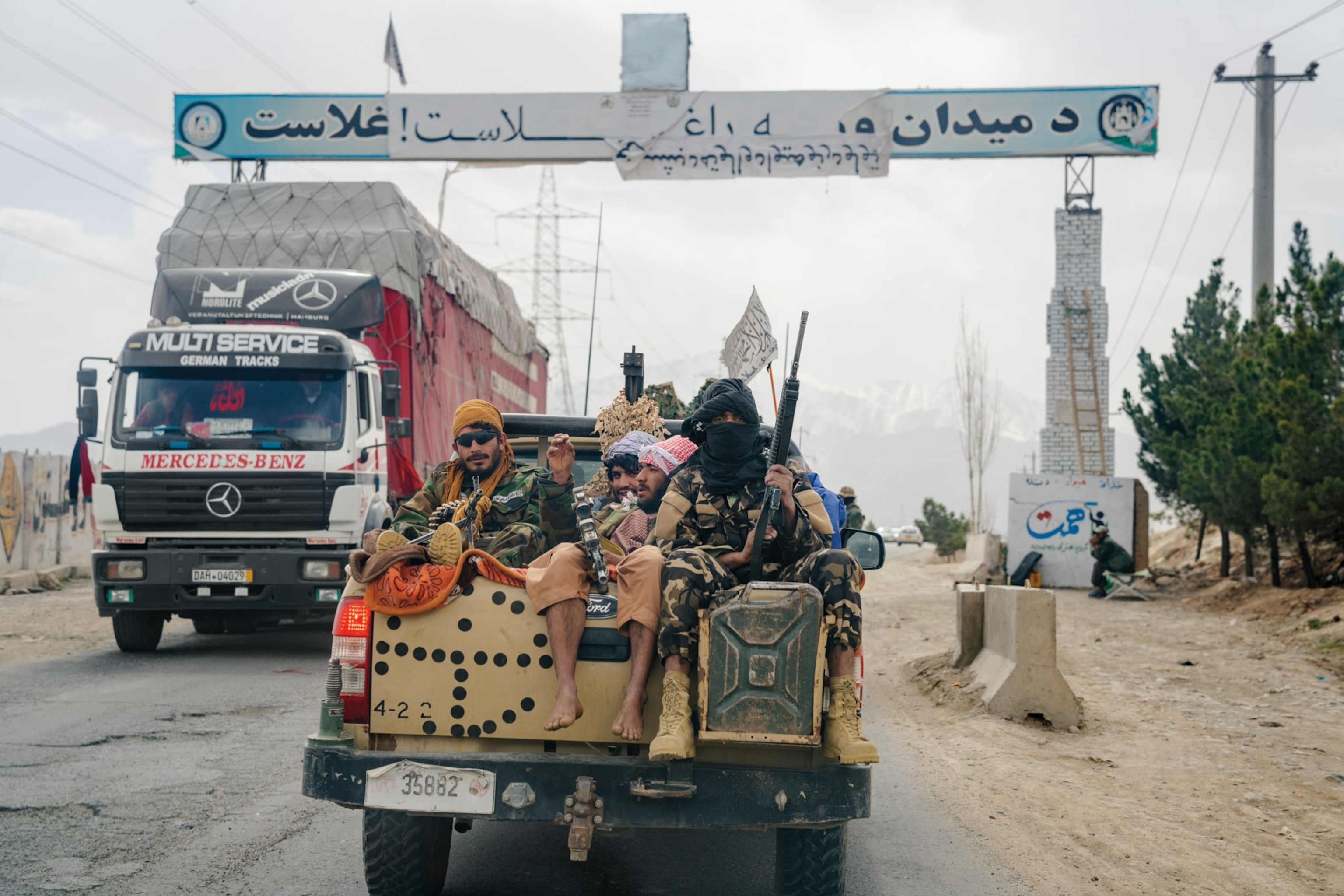
Despite promising amnesty for former enemies and respect for the rights of minorities and women, the Taliban have carried out summary executions of government forces who surrendered; have failed to stop sectarian attacks; and have aggressively erased efforts at women’s inclusion—from barring them from certain government jobs and forcing women newscasters to cover their faces to banning secondary education for girls. Since the Taliban takeover, the heavily aid-dependent economy has dried up, leaving 95 percent of the population hungry, according to the World Food Programme.
Cash-strapped and isolated, the Taliban’s quest for international recognition and assistance is undermined by their continued ties to al Qaeda. Bin Laden’s successor, Ayman al Zawahiri, was in a safe house in central Kabul when he was killed by a U.S. drone strike on July 30. Two-and-a-half years earlier, the Taliban had pledged the country would not be a base for terrorists to threaten the West, a commitment that was central to the peace deal that paved the way for the exit of American forces last year, ending a two-trillion-dollar nation-building effort.
In dusty urban centers and crumbling villages, we find few traces of that two-decade, U.S.-led modernization project. With each mile we drive, ominous signs of Afghanistan’s dark and insular past emerge, underscoring a sense of a country moving in reverse.
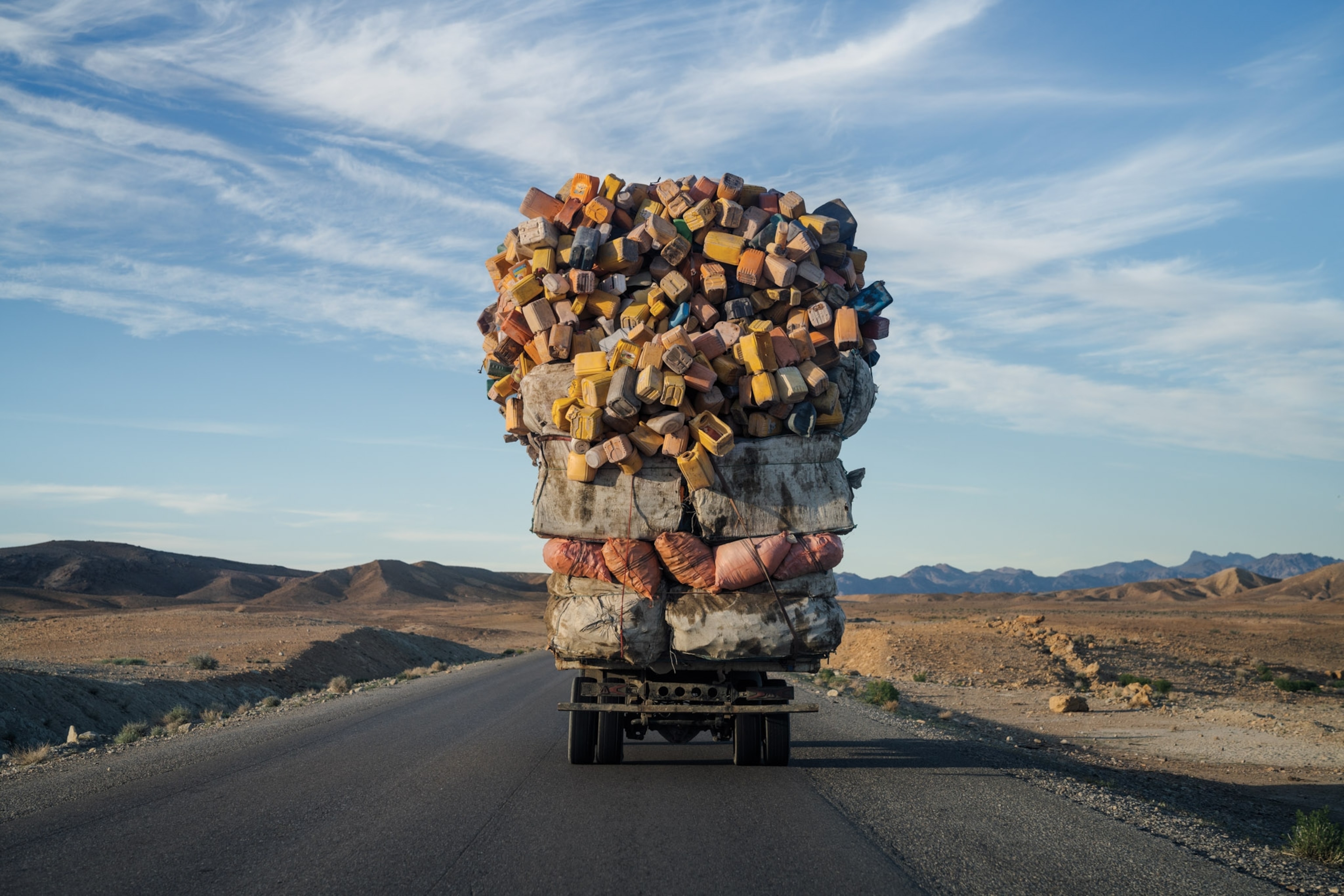
We turn off the highway in Shaykhabad onto a gravel road to visit Roshanak Wardak, a physician and outspoken former member of parliament. Wardak, her hair covered by a black scarf, is virtually at a loss for words when we meet. It’s the first day of school across the country, and the Taliban have just announced that girls above sixth grade will be barred from attending.
“I am in shock,” says a stone-faced Wardak. She plays a cell phone video of a teenager pleading for entry into class. “It means the destruction of her future. A human being without education will be nothing.”
Wardak opened a women’s clinic in 1996, shortly before the Taliban came to power. Afghan women were dying at alarming rates during childbirth, and Wardak defied conservative authorities by providing medical care while refusing to veil her face. She was among the first cadre of women elected to parliament after the Taliban fell, and in 2010 she returned to being a full-time doctor to treat casualties in the insurgency against foreign forces. She wanted the bloodshed to end and saw the Taliban as the best hope for evicting the US military. She also believed she could have a moderating influence on the Taliban in her community, many of whom she had known since they were boys.
The past year has dashed her hopes. The Taliban have reimposed decrees that forbid women from traveling without a male relative, going to parks on the same day as men, or showing their faces in public.

“This is not Islamic,” Wardak complains. “All my good opinions of them have changed. The world is going forward; we are going back.”
We follow Wardak to the district hospital where she sometimes works, a spartan facility dependent on foreign donors. Afghanistan’s backcountry has been hit especially hard by lost aid, U.S. sanctions, and asset freezes, along with low harvests and a harsh winter.
In the malnutrition ward, Ayesha hovers over her withered infant daughter, Reshma, who’s being fed through an IV drip. At eight months old, Reshma weighs less than six pounds. Hospital director Abdul Hakim sees 50 to a hundred malnutrition cases a month and expects more. When the Taliban returned, many trained medical workers fled. “Now we don’t have enough doctors and supplies to treat people,” Hakim says.
Strikingly, the trauma ward is nearly empty. During the war, corpses of government forces and Taliban militants piled up like “stacks of wood” in the lobby, Wardak recalls. Today the lone patient is a trucker getting his cheek stitched after a traffic accident to avoid a bomb crater in the road.
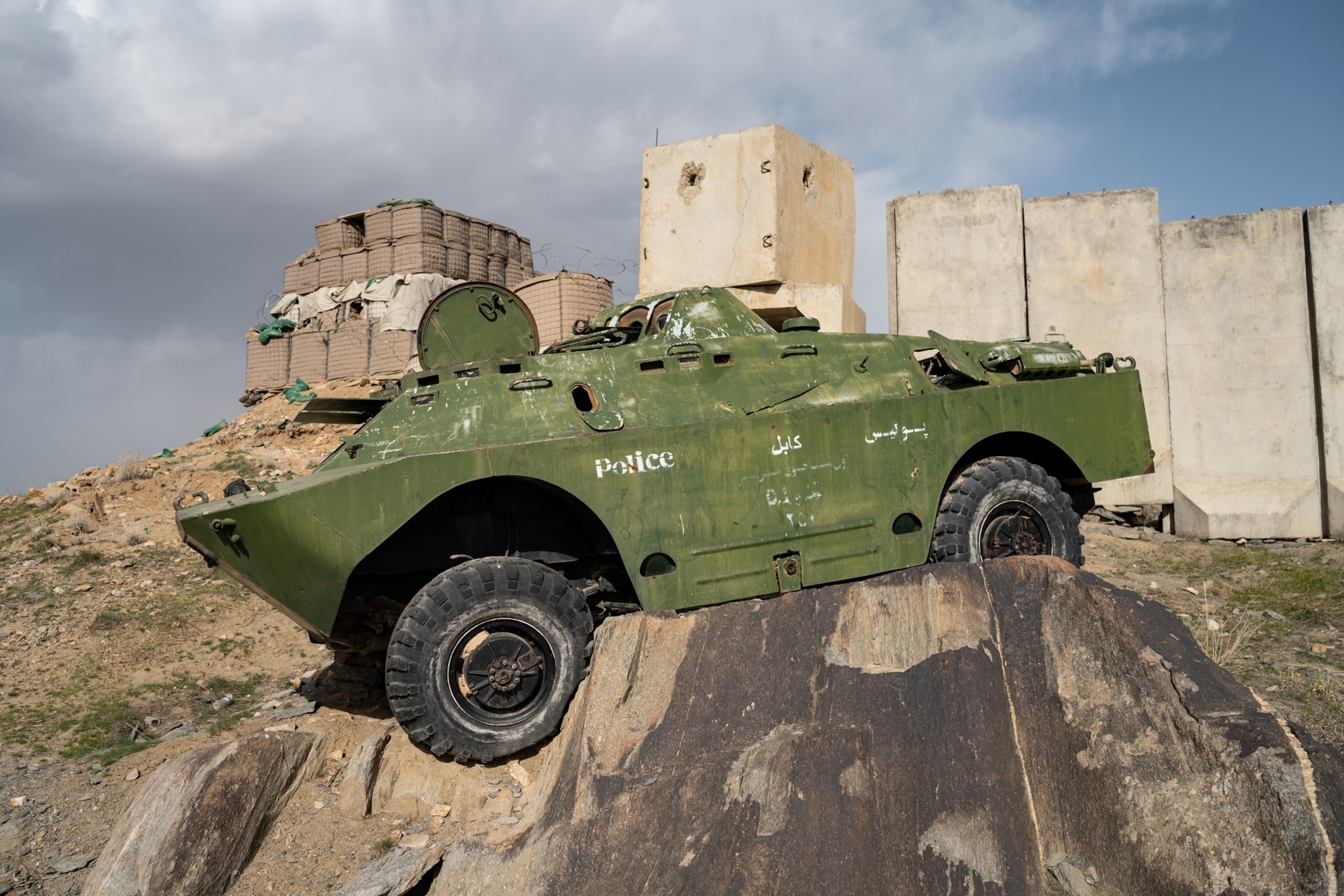



Some miles down the highway, a rangy 50-year-old who goes by the nom de guerre Khan boasts that he is the man responsible for most of the Highway 1 attacks in Sayyidabad District. From 2006 to 2019, he says, his roadside bicycle repair shop was the lookout post for a bomb-emplacement squad that terrorized U.S. and Afghan convoys; by his count, they struck more than 2,500 vehicles. “Sixteen people were killed in that explosion,” he says, pointing to a bald patch of pavement. “We killed eight more Americans over there. No one was safe on this road.”
Khan is now a security guard at the Ministry of Public Works in Kabul, an irony not lost on him. Like every Taliban fighter we met, he says he waged jihad because foreigners were a corrupting influence on Afghans’ values and traditional way of life. With the war over, his animus against outsiders has softened into curiosity, and he invites us for dinner.
Rumbling across a floodplain at dusk, we pass vehicle carcasses staked with tattered prayer flags—memorials to comrades killed by U.S. drone strikes. Woodsmoke rises from the high adobe walls of Khan’s fortress compound, and we sit down to a meal of okra stew and unleavened bread, prepared by a wife and daughter we never see. Khan stuffs a wad of food into the mouth of his two-year-old son, informing us the child was “born the night of the last raid on our home.”
We’re joined by his former comrade who goes by the name Elham, a sturdily built man in a camouflage jacket. The pair reminisce over tea, nostalgic for the charged sense of purpose they once shared. “Before, we suffered but we were happy,” says Elham, who now works in a provincial passport office. “Now I’m bored. I miss the war.”

Wardak Province’s jagged gray ridges level into washed-out plains as we enter Ghazni Province. The last time I drove here was in an armored U.S. Army convoy, and our trip was cut short when an improvised explosive device killed two Afghan policemen up front. This time, Taliban fighters inspect our trunk for weapons and wave us on with an apology for the hassle.
A sandstorm engulfs the highway, slowing our progress, and it’s getting dark when we reach Kandahar, the birthplace of the Taliban. In the past year, security has improved and “no one steals a single afghani,” Gulalai, a vendor churning ice cream in the main bazaar, tells us, referring to the currency. “We welcome them back.” Several stalls down, fabric seller Sabor Sabori counters that while law and order have improved, there’s a trade-off: People no longer can speak their minds freely.
“Whether you are happy or sad,” he says, “you say you are happy.”
Near the city center, the grave site of Abdul Raziq, a fearsome U.S.-backed police commander and Taliban nemesis, has been walled off, his once ubiquitous image stripped from billboards and car windows. At the height of his power he ran Kandahar as his personal fiefdom, lining his pockets with customs revenue while police shook down merchants to supplement meager salaries and henchmen allegedly carried out torture and disappearances. Human rights groups have amassed credible evidence that the Taliban committed revenge killings against former government forces, with some of the most blatant cases in Spin Boldak, the ancestral home of Raziq.
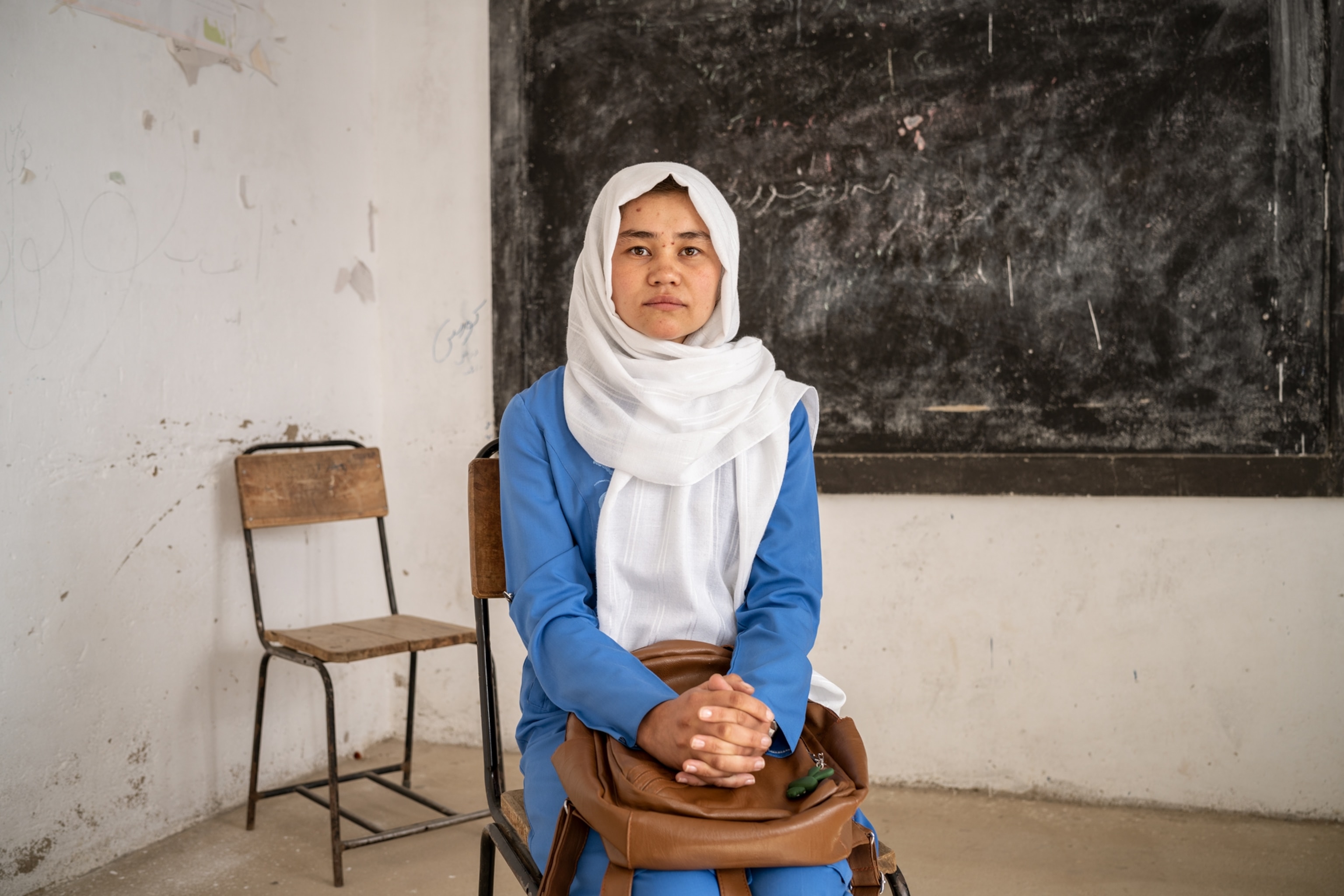

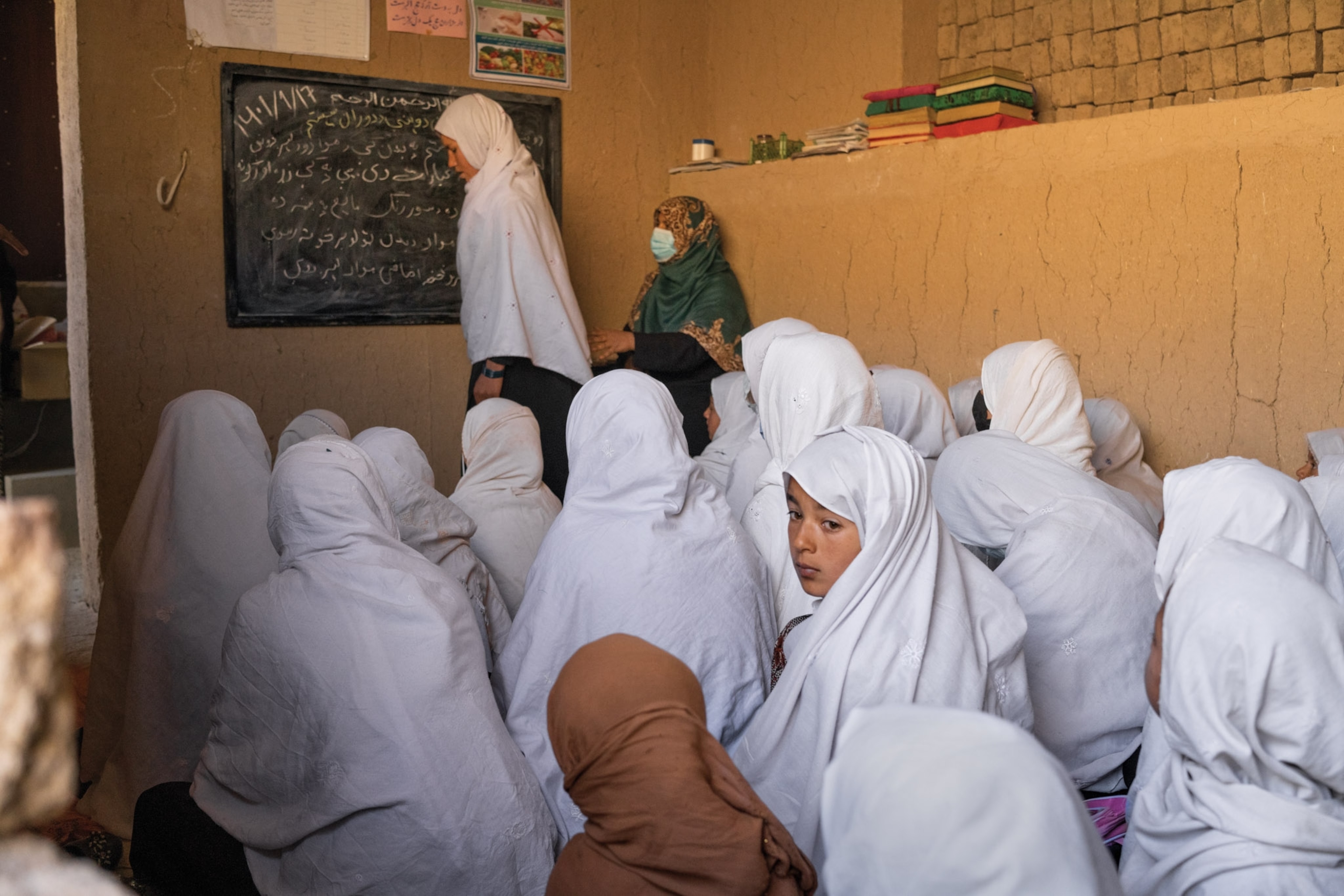
At our obligatory media check-in the next morning, the Taliban’s provincial information chief, Ahmad Syeed, dismisses the killings as “personal disputes” and hands me a booklet outlining crimes during Raziq’s reign. We are free to speak with whomever we please, he adds, as long as we are accompanied by a Taliban minder.
A four-mile line of empty, colorfully painted “jingle” trucks, so called for the chimes that embellish the flat-bed vehicles, waits to cross from Spin Boldak back into Pakistan. The crippled Afghan economy relies on imports; nearly 28,000 pounds of commercial cargo pass through this border every day, along with UN aid convoys destined for far-flung provinces.
The Taliban takeover sparked an exodus for Pakistan and Iran, among them technocrats, doctors, engineers, and other professionals essential to running a functional state. To stem the brain drain and the flight of staff who worked at foreign missions and businesses, the Taliban decreed in February that Afghans without travel documents couldn’t leave without permission, even for medical emergencies.
Wincing in pain, 16-year-old Anar Gul hobbles across the street with help from relatives. A mysterious paralysis set in from her waist down, her uncle Abdul Hamed explains. But the neurologist in Herat, their home city near the Iranian border, fled when the Taliban swept to power. So they’ve made a two-day drive along the Ring Road to see another doctor in Pakistan, more than 900 miles away.
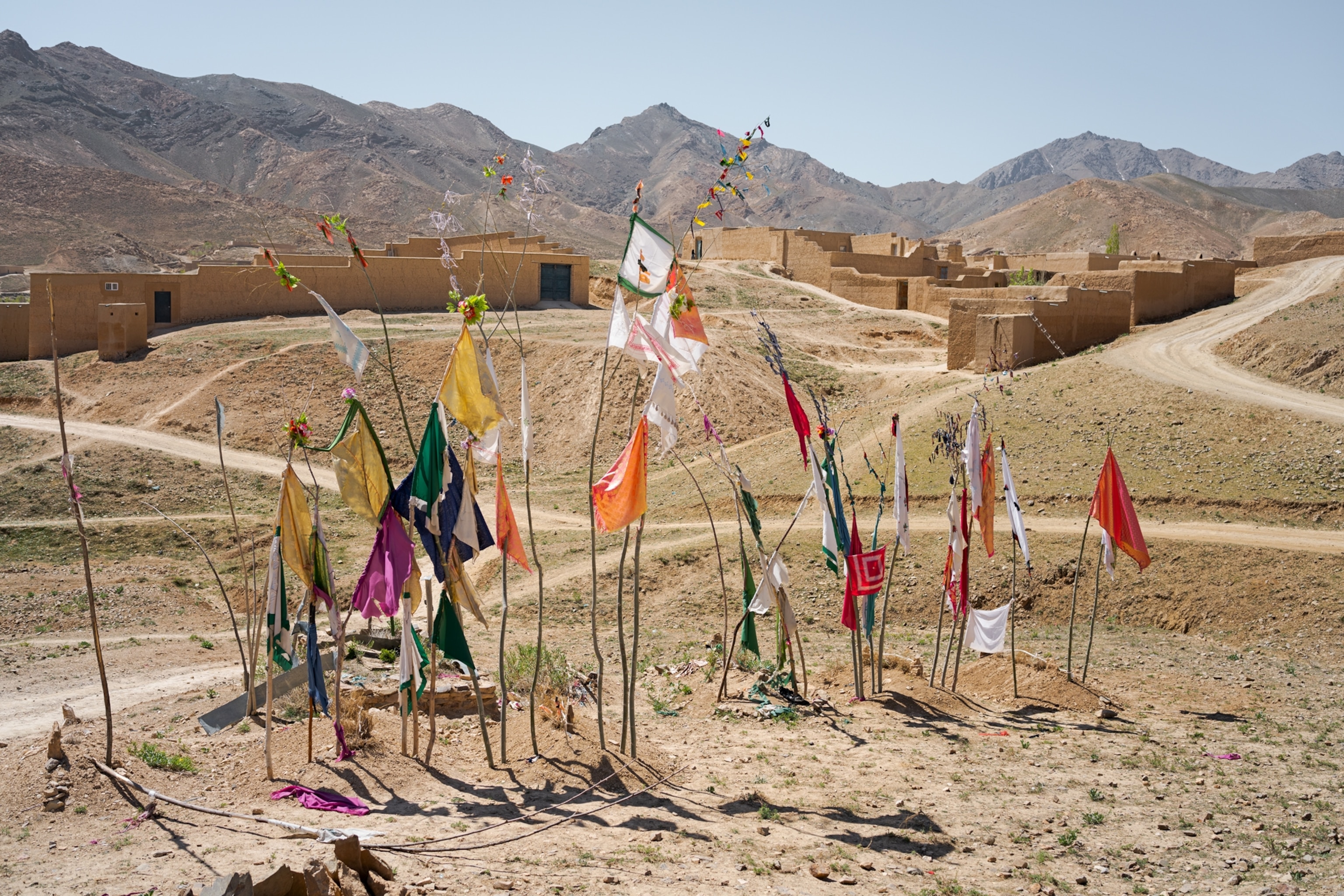
Less than a mile beyond Kandahar’s city limits, opium poppy fields flare up along the highway. Snow white, pale purple, and lipstick red, the flowers are loudly, enticingly everywhere.
Growing opium poppies was banned for the last two years of the first Taliban government; they later taxed the sale of opium and heroin in regions they controlled during the U.S. occupation. According to the UN Office on Drugs and Crime, Afghanistan was the top producer of opium last year, yielding 7,500 tons worth as much as $2.7 billion, about 10 percent of the country’s gross domestic product. Desperate to ease the economic crisis, the Taliban had a choice this year: Crack down and deny rural poor their most lucrative crop—or turn a blind eye.
I wade into a field and inhale the sickly sweet scent of poppy latex drying in the sun. Ali Jan, 36, scores bulbs with a purpose-made tool, as he has done since he was a teenager. He earns about five dollars a day, paid in raw product. “If there were other work, we would leave the opium business,” he says.
Under the last government, Jan says, he had to pay kickbacks to local authorities. So far the Taliban aren’t interfering, but there’s a rumor they will impose a ban after harvest, allowing them to collect taxes now and curry favor later with Western countries seeking to stem the flow of heroin. Despite $8.62 billion in U.S. counternarcotics spending, opium poppy cultivation surged during the war.
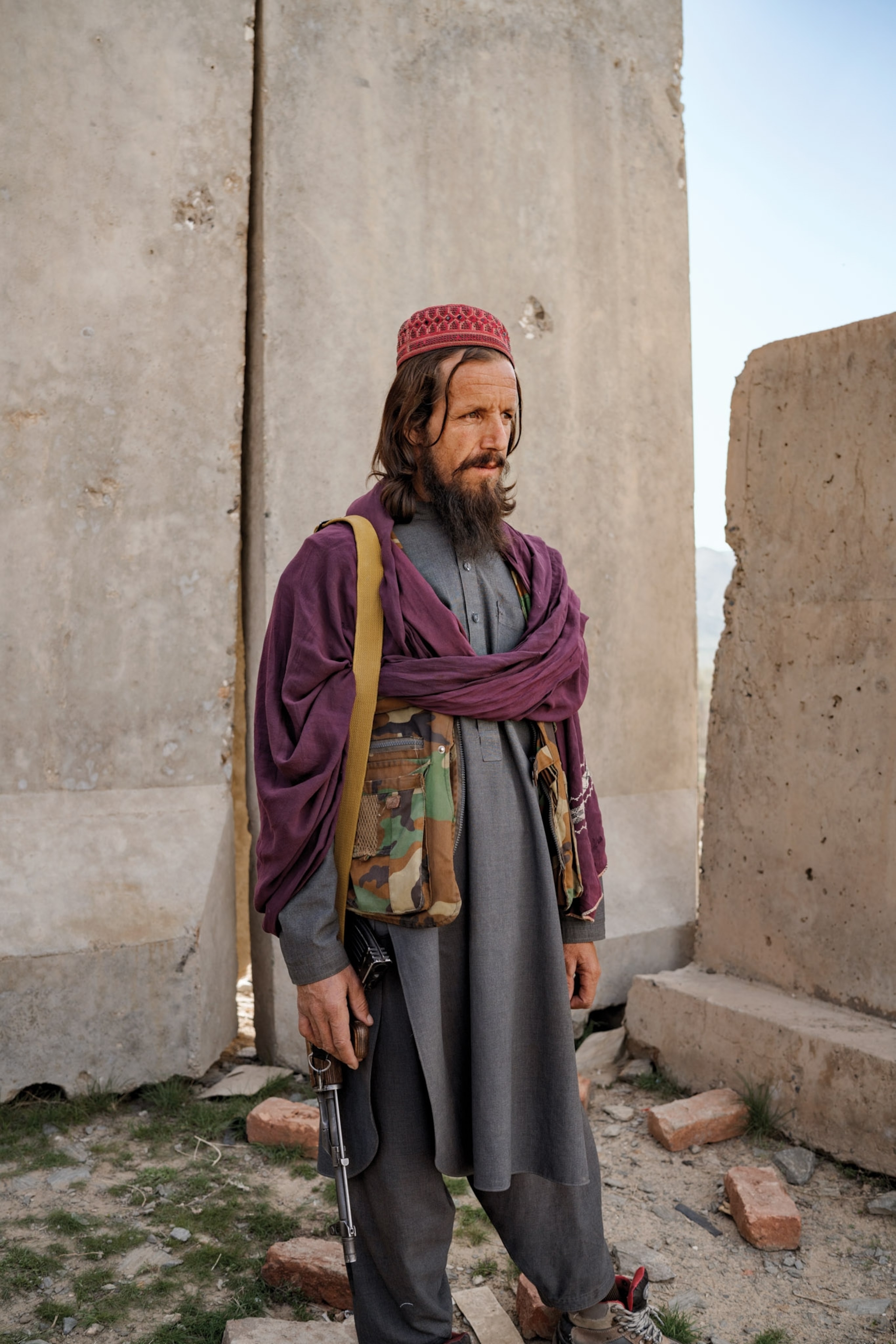
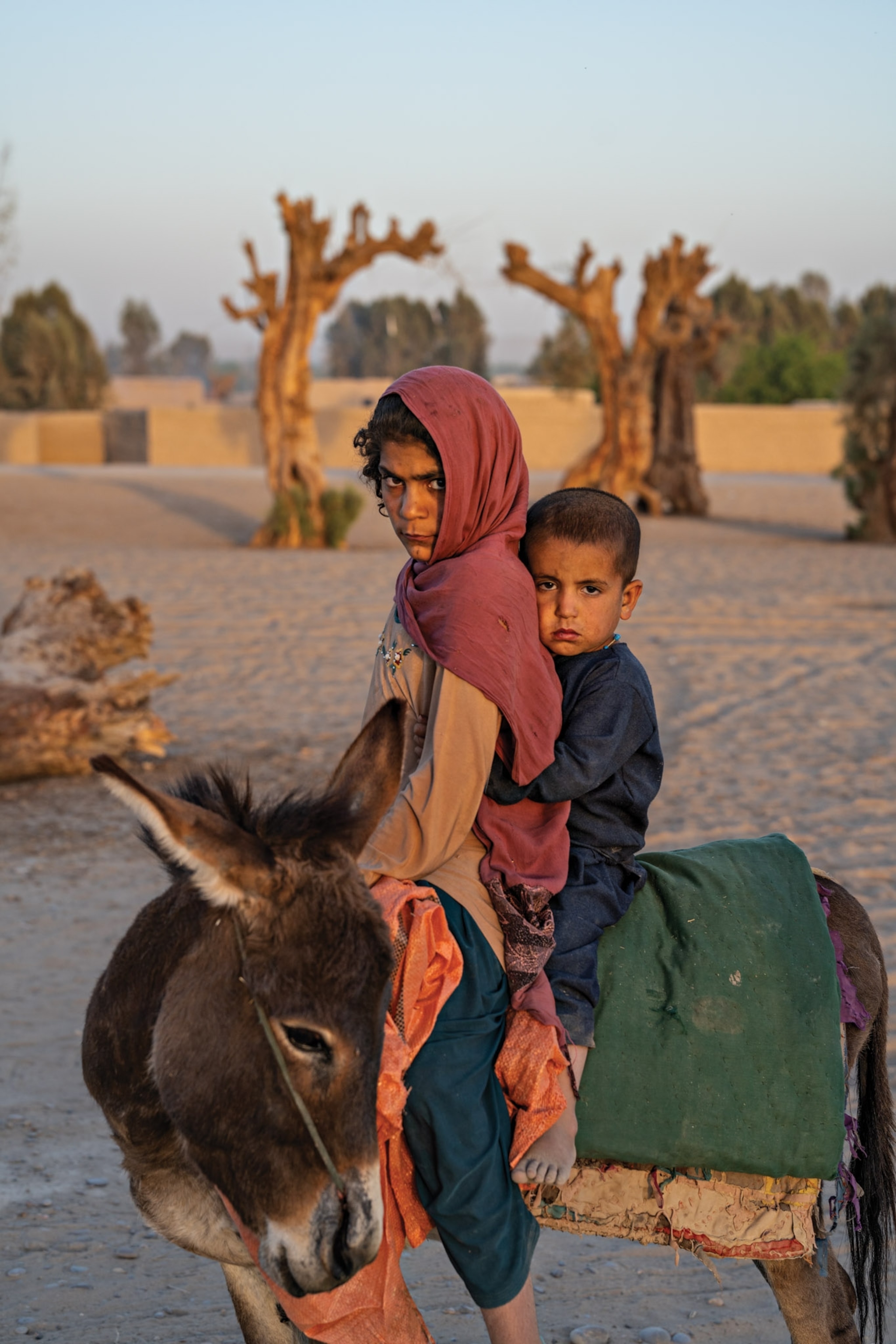
Poppy fields multiply down a dirt track to Sangi Sar. The farming hamlet is unremarkable except that it was here that Mullah Mohammad Omar, a one-eyed veteran of the 1980s mujahideen struggle to end the Soviet occupation, formed the Taliban in the 1990s. Warring commanders were killing and thieving during the civil war that broke out after the Soviet pullout, and Omar built a following of fundamentalist religious students known as Talibs, who captured all but a few pockets of the country in 1996.
Omar fled to Pakistan after the U.S. invaded Afghanistan five years later, and died of illness in 2013. His former village home was bombed, but the mosque where he was the imam has been rebuilt. An old comrade, Abdul Majid, tells me that Omar “had the belief that whether he was dead or alive, the [Islamic] emirate would one day prevail. He would say of the Americans, ‘You are the most powerful country in the world, and after 20 years you will be the weakest.’ ”
In Lashkar Gah, the capital of Helmand Province, we link up with a Talib named Rozi Billal, whom I’d met months earlier at a sporting event in Kabul. He’d kept in touch, sending family pictures and updates, adamant that we meet again on my next trip. Given his cheerful demeanor and taste for social media, I assumed he was somewhat progressive. I was wrong.
On a rutted road along the Helmand River, Billal, 28, tells us he originally signed up to be a suicide bomber because he was outraged by U.S. airstrikes and raids on his community. Taliban officers thought him too smart to sacrifice and tasked him with training bombers instead. For 12 years he led a double life as a militant and part-time university student. Co-education did little to temper his conservative values. Now a teacher, he insists women be separated. “Women are a distraction,” he says, adding he once had a stubborn female student removed from his classroom for trying to study with men.

Billal guides us through Garmsir District to the shrine of Amir Agha, a pre-Islamic pilgrim from Israel who is still revered by Afghans for believing in one God. The area is said to be haunted. It feels like the edge of the Earth.
Inside a courtyard festooned with rams’ horns we find Taj Mohammad, a slight Arab man with a kaffiyeh, thumbing prayer beads. He says he’s 90 and a descendant of the Prophet Mohammad. For more than six decades he’s guarded the shrine and greeted travelers, as his father and grandfather did before him. “Here,” he intones, “every wish you have will be granted.”
In the cool shadows of the mausoleum, bats wheel and dive. The air faintly smells of myrrh, and Billal swears it emanates from the holy man’s tomb. A group of poppy farmers offer prayers for a bountiful harvest. I ask for safe passage on the road ahead.
Back on the highway the next morning, I scan my map, and the name Bala Baluk catches my eye. A barrage of U.S. air strikes there in May 2009 killed about 140 civilians, most of them children—the deadliest civilian toll of the war at that time. The U.S. military claimed the official Afghan casualty numbers were exaggerated, and falsely suggested the Taliban might have killed people with grenades. I wrote about it then but couldn’t reach the site because it was too risky. Now was a chance to meet some of the survivors and see the site myself. I make a U-turn.
In the village of Granai, a man says he remembers the attack “like it was yesterday.” He jumps into our vehicle to guide us through a maze of tight, winding alleys until we can go no further. In a clearing flush with poppies, a large mound rises in the center. “Ninety-six people died here. I picked up pieces with my hands,” says farmer Said Haidar Shah. Other victims perished in strikes nearby. Word of our arrival quickly spreads and relatives turn up, asking if we brought compensation.

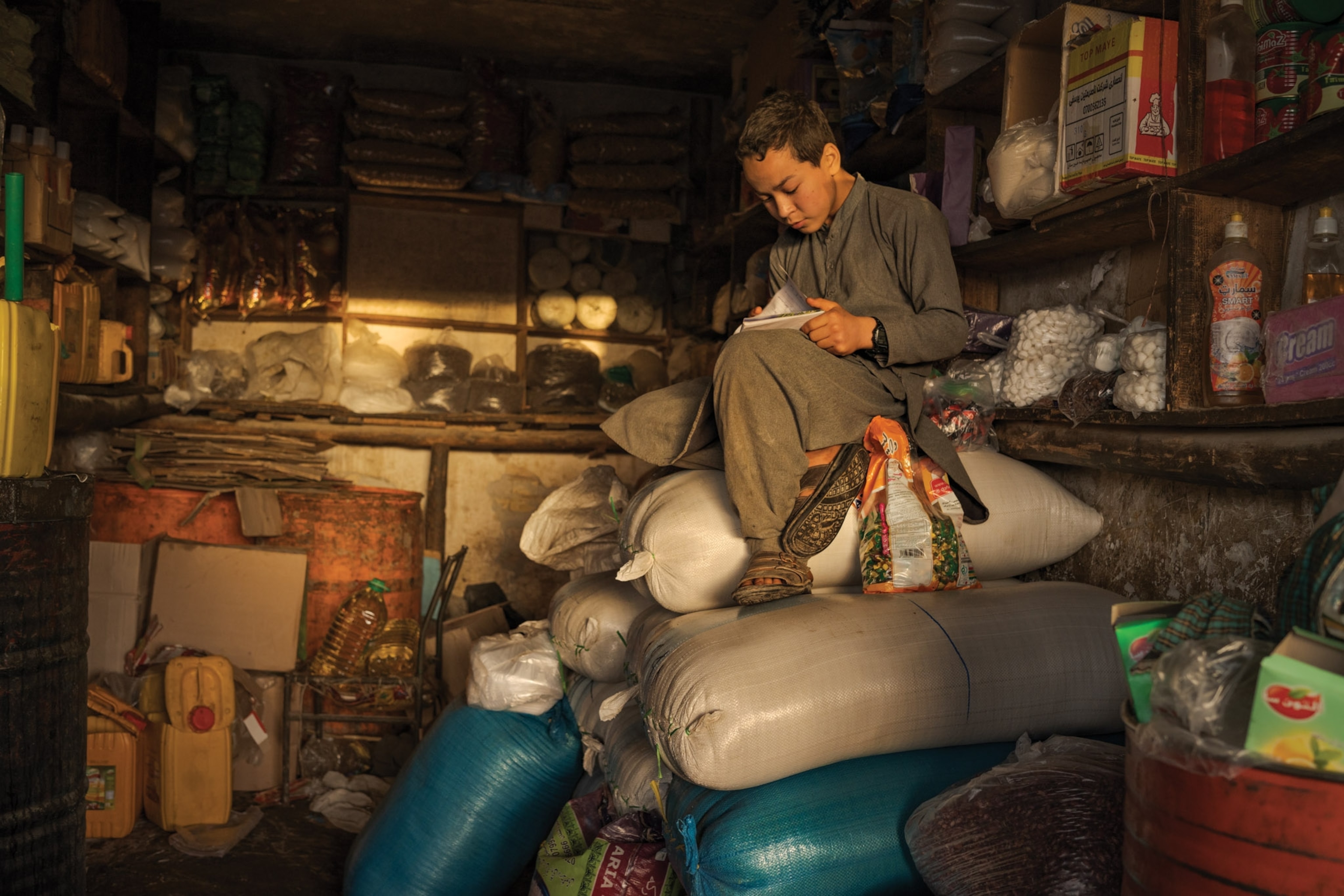
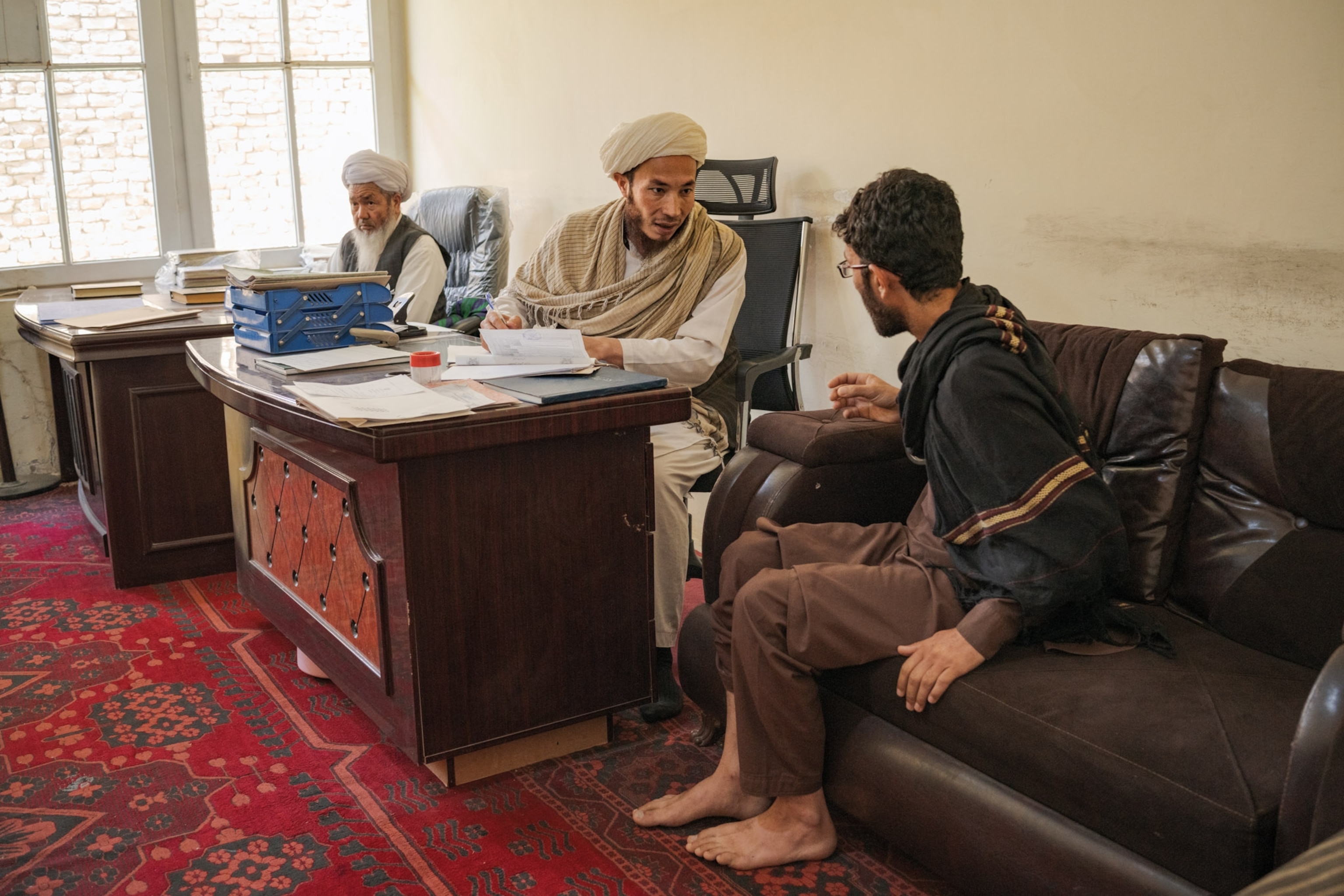

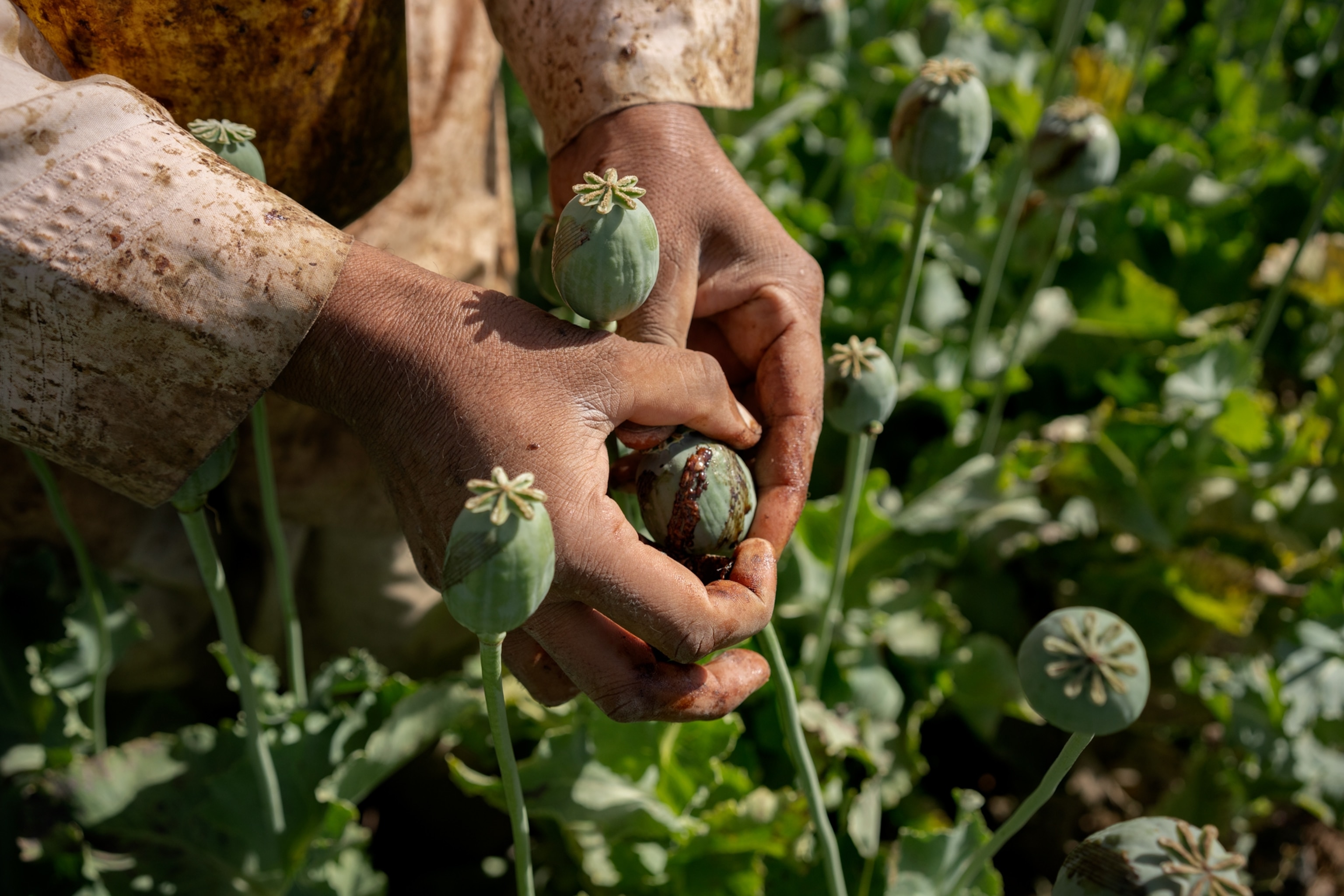
Ahmad Jan, 39, a poppy farmer, says he lost 16 family members. The Afghan government issued condolence payments of about $2,000 to some victims’ relatives, and the U.S. military later acknowledged errors were made. Afterwards, Jan says, village loyalties shifted decisively in favor of the Taliban.
Jan leads us to a graveyard overlooking a shallow river. Rough slate headstones mark those who could be identified. Emotions here are still raw. “The Americans paved roads and spent a lot of money, but they killed too many people,” he says. “We are relieved the war is over. At least we can sleep peacefully now.”
The twinkling lights of Herat snap us back to life after a tedious drive through hard, barren country. Afghanistan’s third largest city, with more than half a million residents, is an ancient trade center that shares cultural ties with Iran, just 75 miles west. Alexander the Great’s army besieged Herat in 330 B.C., and Mongol invaders razed it to the ground in 1221 A.D. Derelict battlements and towers of the centuries-old citadel overlooking the old city were restored in the 2000s with foreign funding, and the city retains a veneer of prosperity.
But in the districts north of Herat, poverty is stark. There are widespread reports of parents selling daughters into early marriage to afford food for their families, and the sale of kidneys for transplants is on the rise. In Dazwari, a highland village near the Turkmenistan border, residents have relied on USAID and UN food deliveries since drought cut wheat output by more than half and decimated sheep. One in three children is malnourished here, community leader Arbab Nader says. “The [Taliban] government does nothing for us.”
In a one-room, mud-brick home, Ma Bibi weaves carpets seven days a week to support her five children, earning $25 for two months’ work. Her 10-year-old daughter, Sharifa, now toils alongside her. “I wanted to be a teacher, but that is no longer possible,” the girl says with resignation.
In Badghis Province, one of the country’s poorest, makeshift camps of displaced people straddle the highway, waiting for aid deliveries that no longer come. The pavement crumbles into patches of dirt, until it disappears.
At a remote checkpoint in Darah-ye Bum, a Taliban guard looks bemused when I tell him we’re driving to Maimanah in Faryab Province, the next major city 145 miles northeast. We start up a steep mountain track, and a boy runs up to warn us it’s too dangerous, redirecting us into a riverbed. I check my smartphone map, which confirms we are still on National Highway 1: The riverbed is the road.
So begins a punishing ride down a boulder-strewn canyon. Several times I get out and move rocks to continue. We grind on for the rest of the day averaging two miles an hour, not another vehicle in sight.
It’s dark when we reach Bala Murghab, a dead-end town of fire-scorched ruins. In 2019, Taliban fighters stormed in and waged a 10-day battle that killed some 30 government forces. An Afghan Army Humvee skewered with a white flag sits like a war trophy on a rise behind the first checkpoint. It is the holy month of Ramadan, during which observant Muslims don’t eat or drink from dawn to dusk. “You don’t look like you’ve been fasting,” says a feral-looking fighter, sizing us up with mock disapproval.
We stop at a filthy teahouse and eat tough kebabs in silence. A shopkeeper lets us crash on his floor, but we hardly rest. The route to Maimanah is off-road, and we must follow a predawn taxi to avoid getting lost. Soon we’re slashing through hill clefts and edging along steep ravines, one rockslide away from tumbling into the abyss. There’s no choice but to keep chasing the taxi’s taillights through dirt clouds and white-knuckle our way through a gantlet of climbs and drops.
When the pavement finally reappears five hours later, we emerge as if from a fever dream. “The Ring Road is a myth,” I say aloud, wondering how many people could have driven the entire circuit. For all the claims of mapmakers and military planners, Afghanistan’s celebrated highway is another overhyped nation-building project left incomplete.



The smooth, sleepy drive into Shibirghan, the capital of Jowzjan Province, is a welcome relief. But the sun-blasted desert that surrounds the highway is haunted by a brutal past.
We pass the turn to Dasht-e-Leili, where in late 2001 as many as 2,000 Taliban fighters captured by Uzbek warlord Abdul Rashid Dostum suffocated in shipping containers and were dumped in mass graves. Dostum became first vice president and then marshal of Afghan armed forces while reigning over Jowzjan with absolute power for the past two decades, living lavishly in palatial homes in Afghanistan and abroad.
An energetic Taliban information officer named Hilal Balkhi informs us that we drove past a recently discovered mass grave. Scattered bones had been spotted along the highway, and a man came forward claiming to have seen Dostum’s fighters bulldozing bodies in 2001. Desert winds had licked the concealing sands away.
Balkhi cancels an appointment to show us the site. He drops to his knees and starts digging with his hands, unearthing jawbones, femurs, shreds of clothing. He moves to the next pile and the next, and vows there will be justice under the new regime.
At the bombed-out provincial court building, people are arguing their cases before turbaned clerics. Many disputes involve land. Ahmad Javed, 39, a clean-shaven IT professional in a leather jacket, alleges that Dostum cronies seized his property. Dostum’s people “could do anything” under the last government, he says. “They beat me up and broke my left hand. I feel very happy the emirate is here; they uphold Allah’s law, not the will of strongmen.”
Jowzjan was the second province to fall to the Taliban in August 2021, and Dostum fled the country. His sudden downfall underscored what had seemed unimaginable: ethnic warlords losing their power base. “When someone does not keep his promises, people will eventually turn against him,” says Najibullah, an ethnic Uzbek who’s a Taliban. The rise of the Taliban, he reminds us, was fueled by hatred of corrupt and abusive warlords in the 1990s; the same behavior over the past 20 years has yielded the same result. “Dostum did not rule people’s hearts, only by the gun.”
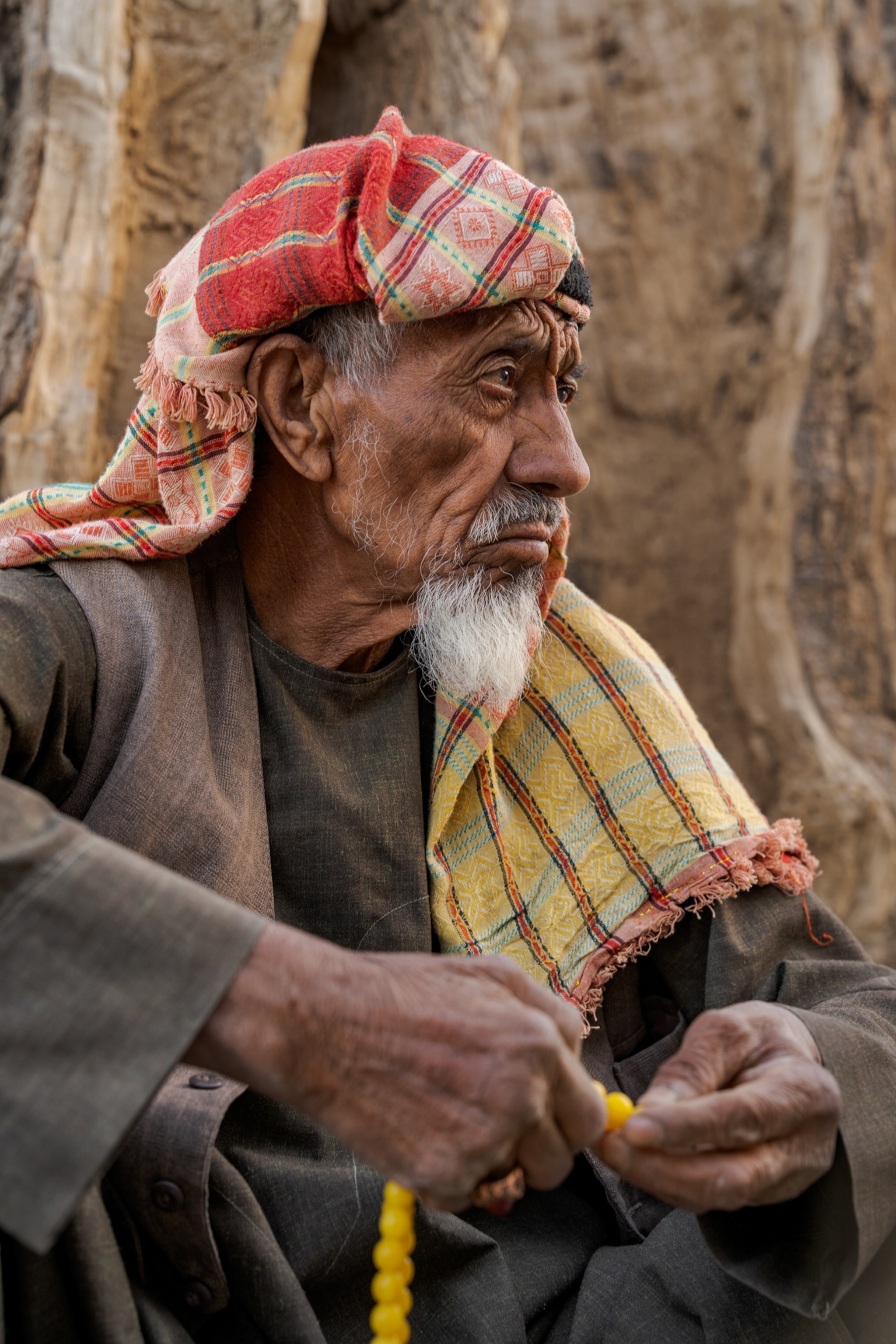
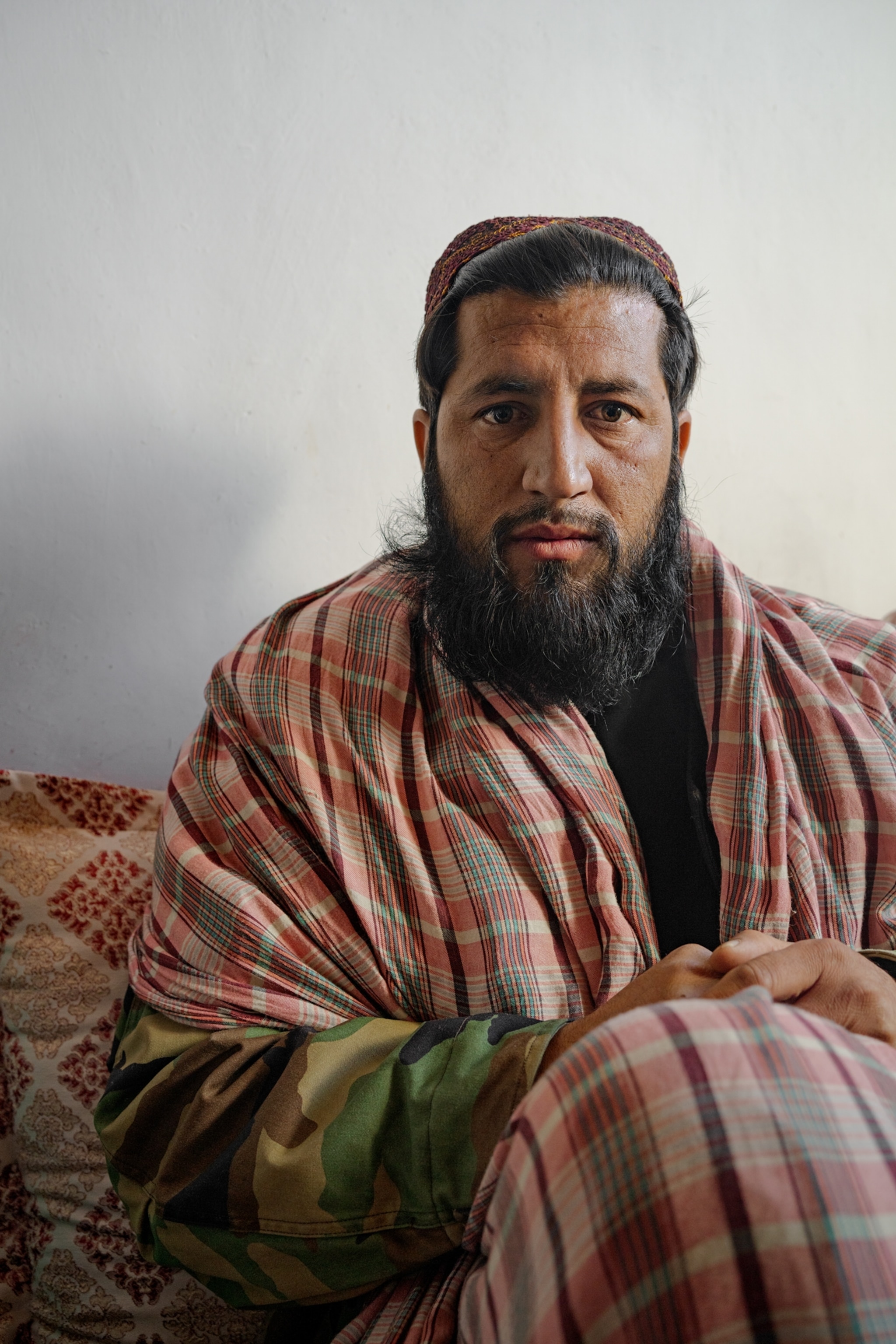
Under the first Taliban government, justice was summary and brutal: public hangings for murder and rape, amputations for theft. Mufti Zahed, Jowzjan’s chief justice, affirms that the death penalty and dismemberments would again be enforced, though he’d not done so yet.
I notice a leather paddle on his desk and ask if he’s ever used it. “Only once,” he smirks, recalling a man who ignored warnings to stop cursing in his office.
That day the Taliban announce a ban on opium, from its cultivation to its sale and use. With government assets frozen and scant diplomatic recognition, the Taliban seem to be trying to gain favor with the international community.
Mawlawi Gul Mohammad Saleem, deputy governor of Jowzjan, concedes “there were problems” during the last Taliban regime. A delegate at Taliban peace talks with the U.S. that were held in Doha, Qatar, he says the movement’s leaders have traveled widely since the 1990s and want to engage with the world, not seal the country off as before. U.S. geologists estimate the country has at least a trillion dollars’ worth of untapped minerals—enough to lift millions out of poverty if foreigners invested in infrastructure.
For the time being, Afghans are scraping out a living in mines with minimal tools or safeguards. Hundreds of men wield drills and pickaxes to extract coal from rich seams at the Madan-e Karkar mine, deep in the hills of Baghlan Province. Fatal accidents are not uncommon, but more and more former soldiers and professionals are risking their lives underground for a few dollars a day—if they get paid.
The miners are on strike when we arrive. They claim the Taliban owe them four months’ worth of back wages, leaving them empty-handed for the upcoming Eid holiday. “We are tired and hungry, and they deceive us,” says Yousuf Khan, a gaunt, 44-year-old miner. He and his co-workers only agree to return after a government official promises they will be paid two months’ salary by the end of the week.
More than 300 feet down the mineshaft, shirtless men haul sacks of coal through sweltering corridors, the wooden support beams buckling overhead. A lack of timber supports and inexperienced workers were blamed when a February collapse at a nearby mine killed 10 trapped miners.
“We know it’s dangerous, but there are no other jobs,” says Mohammad Saber, 24, dripping black sweat on a break from drilling. “I need to feed my children.”
An average of 120 tons of coal are extracted from the mine each day, yielding the government $200,000 a month in tax revenue. Most of the coal mined in Baghlan is loaded onto trucks and transported to neighboring Pakistan, a grinding slog over one of the worst sections of Highway 1 that takes at least three days to cover.
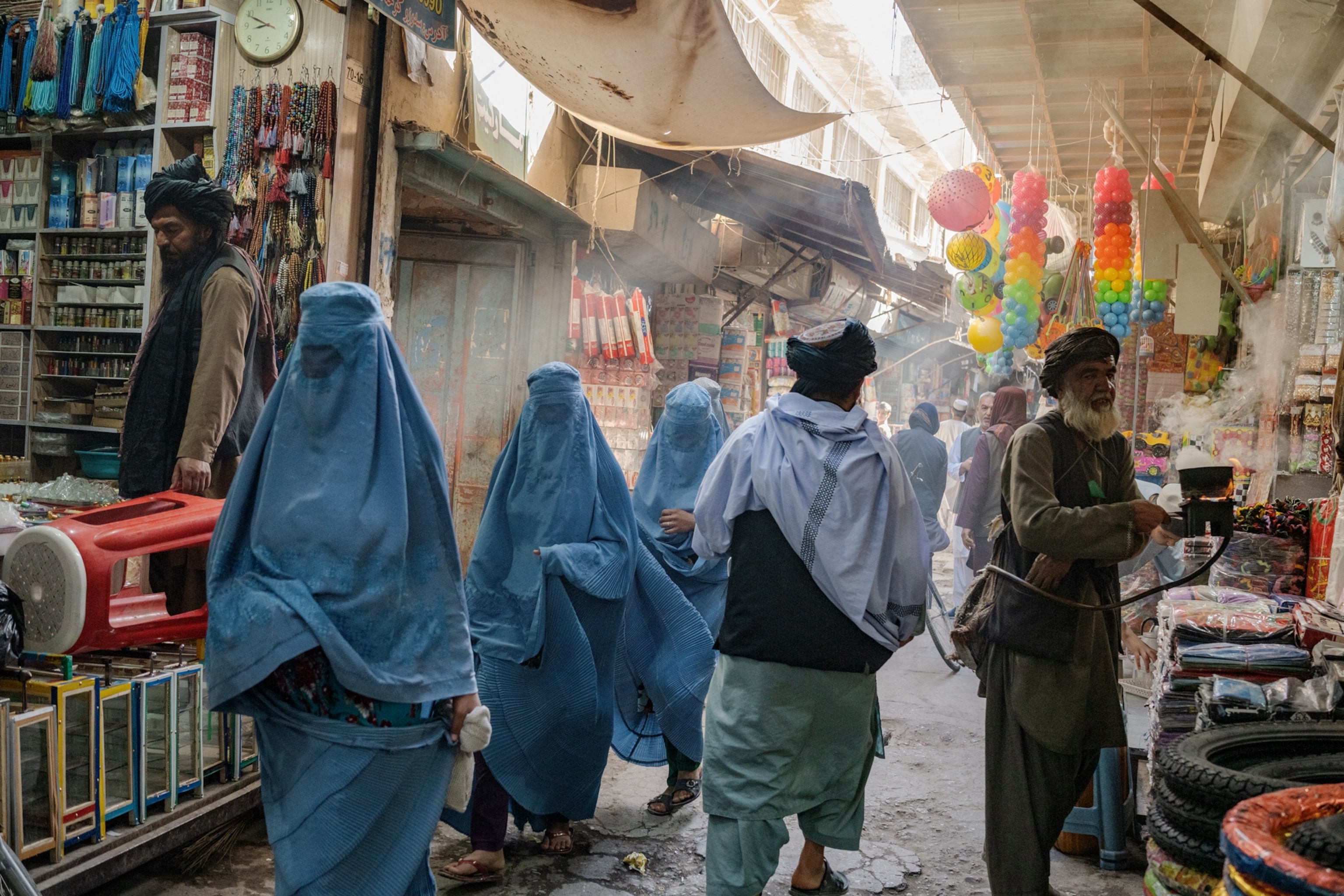
The final stage of our journey is the 1.6-mile-long Salang Tunnel at an altitude of 11,000 feet, carving through the Hindu Kush, the mountains that divide the north from Kabul. A daring feat of Soviet engineering designed to handle a thousand vehicles a day when it opened in 1964, the passage has degenerated into a muddy, pot-holed, smog-choked shaft through which as many as 9,000 vehicles drive each day. An untimely breakdown could snarl domestic trade, spike gas prices, and spell death for those trapped inside.
The mouth of the tunnel is belching smoke as we enter. Visibility drops to zero, and I cringe, hoping we don’t blow a tire. What seems like an eternity later, we emerge from the black lung and pull over to suck down fresh air before a winding descent to Kabul.
There’s one last detour to make: to the Panjshir Valley, the fabled bastion of resistance that the Soviet Army and first Taliban government never managed to tame. Panjshir again held out when every other province fell in rapid succession in summer 2021, but Taliban fighters finally punctured its myth of impenetrability.
The road into the valley knifes along sheer rock walls and a rushing emerald river. Billboards that once featured the late commander Ahmad Shah Massoud and other ethnic Tajik heroes have their faces scratched out. The mood is somber in this holdout of anti-Taliban sentiment. “Maybe five out of every hundred families are left—only people who couldn’t afford to leave,” says Habibullah, a bakery owner in Unabah village. Every other shop is shuttered. “Darkness,” he says, “is everywhere.”
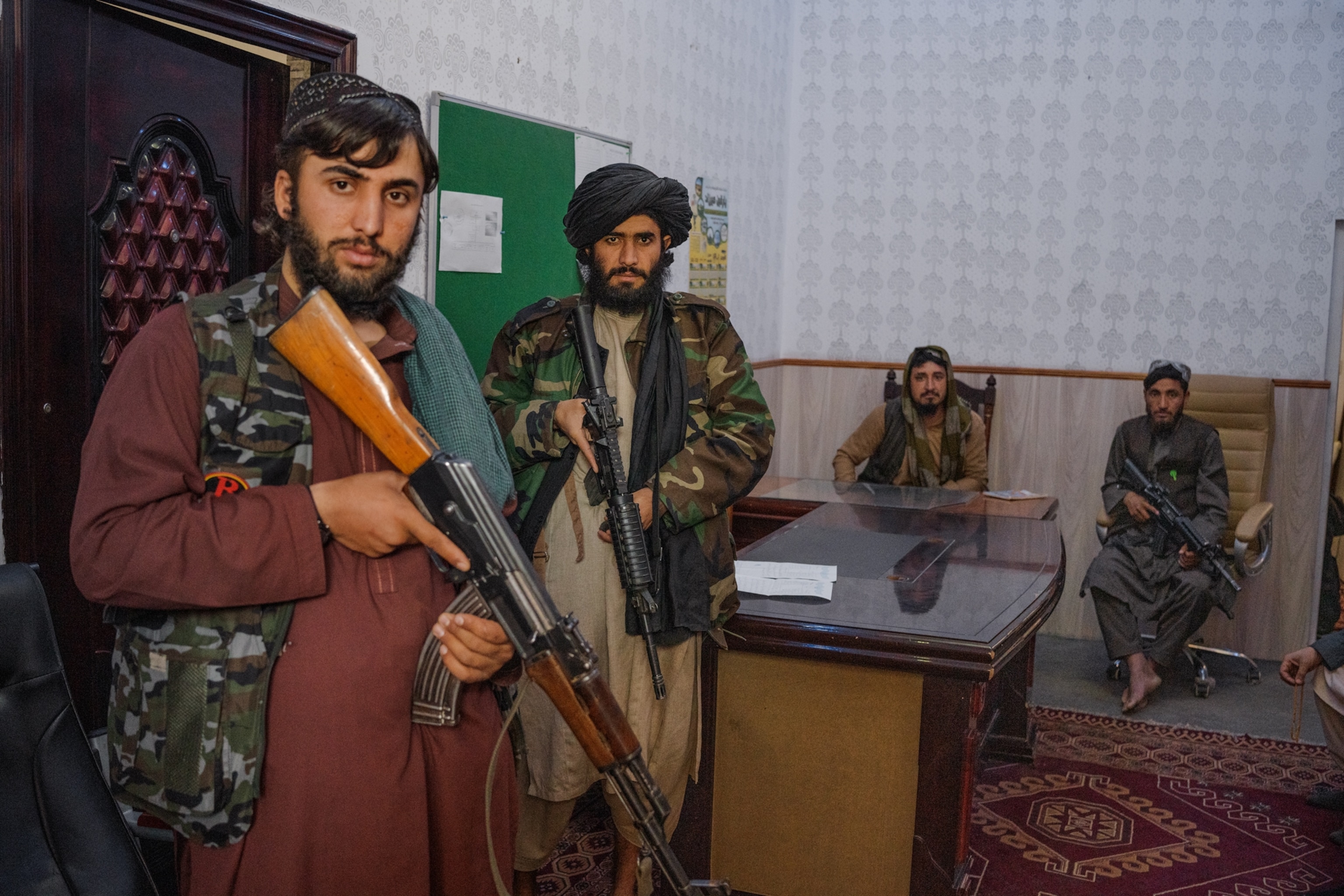
What’s left of Panjshiri resistance has retreated up the mountains. Grainy videos on social media and funerals for slain Taliban indicate there’s still fighting. But for now, resistance is mostly symbolic.
When we reach Kabul, a massive new Taliban flag billows over Wazir Akbar Khan hill, a park in the city center. There’s a gathering with the boisterous feel of a family reunion—minus any women. Fighters from across the country laugh and take pictures, savoring their moment at the top after years in obscurity.
But the Taliban’s transition from guerrilla movement to government is taxing the patience of weary Afghans. New decrees are further curtailing personal and media freedom, and the nation is cut off from trade and aid, plunging the economy into freefall. Food, jobs, and health care are scarce. Infrastructure is a shambles. And even with the war over, it’s not peaceful.
In April, terror attacks on religious minorities at mosques and schools killed at least a hundred people, mainly ethnic Hazara from the Shiite Muslim minority. Hazara have become the target of the Sunni extremist group known as Islamic State, Taliban rivals who consider Shiites heretics. The attacks have stoked fears that a renewed cycle of bloodshed could be coming.

“We have spent our entire lives in conflict, so I can predict the future,” says Abdul Khaliq, a 50-year-old laborer who witnessed the Soviet invasion, civil war, and the U.S.-led campaign. “This country will not be rebuilt for another 50 years.”
On our last day we drive back to Shaykhabad to see Wardak, the doctor. Her fatalism on the day the Taliban banned older girls from school has been replaced by defiance. She is delivering notebooks and pens to a community-based girls school she supports.
In a private compound, high in a mud-walled hamlet miles from a paved road, girls as young as six are cramped together on the floor of a small room, reciting facts about the circulatory system. Wardak complains the quality of education is not good—no tests, few textbooks—but at least the girls are learning something, fueling "hope that maybe one day they will return to school.”
Back at home, Wardak has something to show us. Past a grove of apricot trees and rosebushes is a hidden stone building with a vacant terrace.
“If the Taliban does not allow girls to go back to school, I will build one here,” she declares, the vision sparkling in her blue eyes. “I’ve made up my mind to stay and resist however I can—it is my duty as an educated woman. The next time you come here, this place will be full of beautiful voices.”
A version of this story appears in the October 2022 issue of National Geographic magazine.

